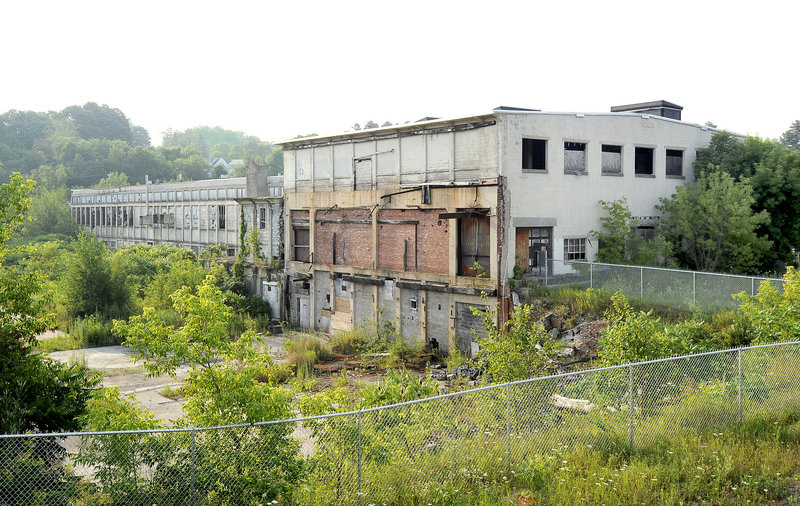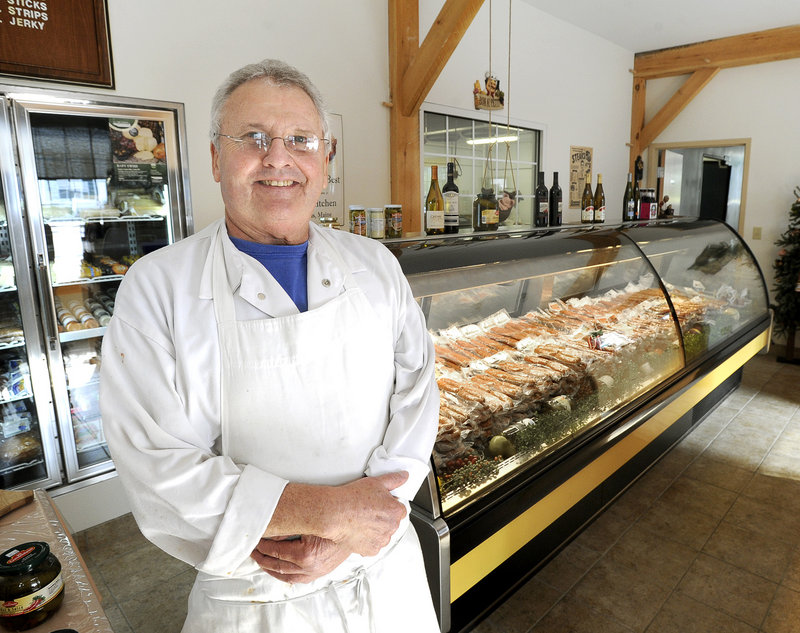Earlier this summer, a fence went up around the Keddy Mill site in South Windham Village.
Access to the crumbling mill building was restricted, and a meeting was scheduled to inform area residents of the low-level but widespread toxic contamination discovered in their midst.
The news for Keddy Mill, where owner HRC Village at Little Falls has long envisioned a Presumpscot Riverfront residential development, keeps getting worse.
The seven-acre property is one of 175 brownfields on the Maine Department of Environmental Protection’s official list of sites where redevelopment has stalled because of real or perceived industrial contamination. While the stories for many brownfield sites in Maine have happy endings, the fate for Keddy Mill appears far from certain.
“It has become a bigger problem than anyone thought originally,” said Jean Firth, DEP’s brownfields coordinator.
In general, Maine has made significant progress in getting its brownfields properties back in working shape since the mid-1990s. That’s when regulators began to expand their focus beyond the large, highly publicized and contaminated Superfund sites, such as New York state’s Love Canal and Woburn, Mass.
These sites gave properties with an industrial past, including New England’s fast-emptying paper, shoe and textile mills, a bad rap. Most developers assumed the sites would be widely contaminated and passed them over for undeveloped land.
In 2002, the federal Small Business and Brownfields Revitalization Act expanded the effort, broadening what is considered a brownfield to include property contaminated by petroleum and even sites polluted from the manufacture and distribution of drugs, such as meth labs.
Since then, about 70 properties have been rehabilitated in Maine. About 15 percent have required no cleanup at all. Maine has also managed to rake in millions of dollars in Environmental Protection Agency grants to put its brownfield sites back on the tax rolls.
Maine pulls in more brownfield money per capita than any other state, according to state officials. This year, Maine communities were awarded $3 million to clean up their brownfields, second in New England to Massachusetts, which received just $500,000 more. Maine took in more money than New York and just $50,000 less than California.
There are many more brownfields than appear on the DEP’s official list. Maine’s nearly 500 municipalities reported a combined 2,015 brownfields in a 2004 survey. Almost half were gas stations and auto repair shops.
Firth said Maine manages to be among the top grant winners because the state works with cities and towns to help them get EPA funding. The DEP spent $31,000 to help Augusta assess the American Tissue Co. site, which the city seized for nonpayment of taxes in 2009.
That initial assessment enabled the city to obtain another $350,000 to determine the extent of contamination on the 200-year-old industrial site. This year, the city obtained $400,000 for the cleanup, which wound up being much less costly than expected.
Since 2003, the redevelopment at Maine’s brownfield sites has created 600 permanent jobs at new businesses, as well as temporary employment for the cleanup contractors, construction crews and environmental consultants involved in readying a total of 1,200 acres for redevelopment.
The redeveloped sites include the former 40-acre Eastern Fine Paper mill, now Cianbro’s Eastern Manufacturing Facility in Brewer; and the 10-acre Bates Mill in Lewiston, now an office and light industrial complex.
Not all brownfields are sprawling mill sites. An asbestos-riddled teen center in the heart of Lisbon Falls was cleaned up with a $20,000 brownfield grant. The Main Street site is now the home of Maurice Bonneau’s Sausage Kitchen, a thriving family-owned business that sells its all-natural meat products across the country.
President Andre Bonneau said his father started the business as a retirement project at a former nursery business.
He said moving into downtown Lisbon Falls doubled their sales and boosted foot traffic for adjoining businesses.
“People travel surprising distances for our product,” Bonneau said.
The Keddy Mill site cleanup will not be as easy. Because it is privately owned, the site doesn’t qualify for brownfields cleanup money.
The developer, HRC Village at Little Falls, had long ago secured town approval to build an 85-unit condominium complex. The site formerly housed a paper mill and then a foundry before it closed 40 years ago.
The developers shelved their project in 2009, when the recession hit and environmental concerns began to mount.
When the town secured a $200,000 grant to assess the mill and 32 other potentially contaminated sites, Windham officials were optimistic that more testing at Keddy would get the residential development back on track.
But this spring’s assessment found that high concentrations of toxic polychlorinated biphenyls, known as PCBs, have seeped into the concrete of the mill building and are present at low concentrations in the ground across the property.
“It was even more widespread than we thought,” said Tom Bartell, the town’s economic development director.
The developers have cleaned out contaminated dirt and debris from the building, a popular site for skateboarders and uninvited overnight campers, and erected a fence warning people to keep out.
A meeting with officials from the EPA, DEP and others is scheduled for 6 p.m. Aug. 2 at Windham High School to discuss the latest findings and answer questions.
The cost of cleaning up the site is anybody’s guess at this point, Bartell said.
“The working assumption is the whole building and a lot of ground around it would have to be sent to a very expensive hazardous waste dump” far away, Bartell said.
But Renee Lewis of HRC Village at Little Falls said she and others on the project are not ready to give up, even though she was pregnant with her son, now age 8, when she first got involved.
She said they are pursuing a number of options, such as creating a nonprofit entity or asking the town to take ownership over some or all of the property, qualifying it for public cleanup money.
“We are hoping to continue working with the town on a long-term plan,” she said.
Staff Writer Beth Quimby can be contacted at 791-6363 or at:
bquimby@pressherald.com
Copy the Story Link
Send questions/comments to the editors.





Success. Please wait for the page to reload. If the page does not reload within 5 seconds, please refresh the page.
Enter your email and password to access comments.
Hi, to comment on stories you must . This profile is in addition to your subscription and website login.
Already have a commenting profile? .
Invalid username/password.
Please check your email to confirm and complete your registration.
Only subscribers are eligible to post comments. Please subscribe or login first for digital access. Here’s why.
Use the form below to reset your password. When you've submitted your account email, we will send an email with a reset code.